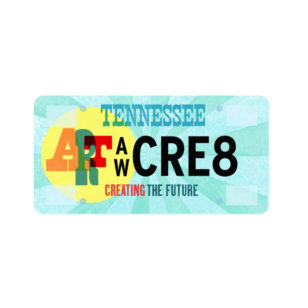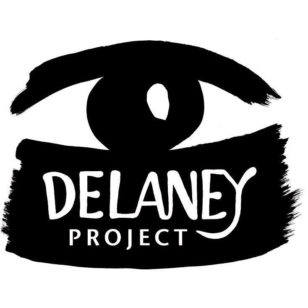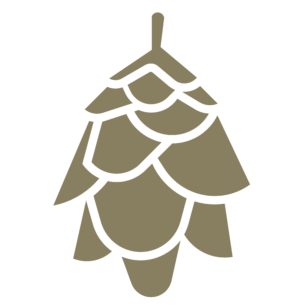INTERVIEW: RICHARD LOU
JUL. 07, 2025
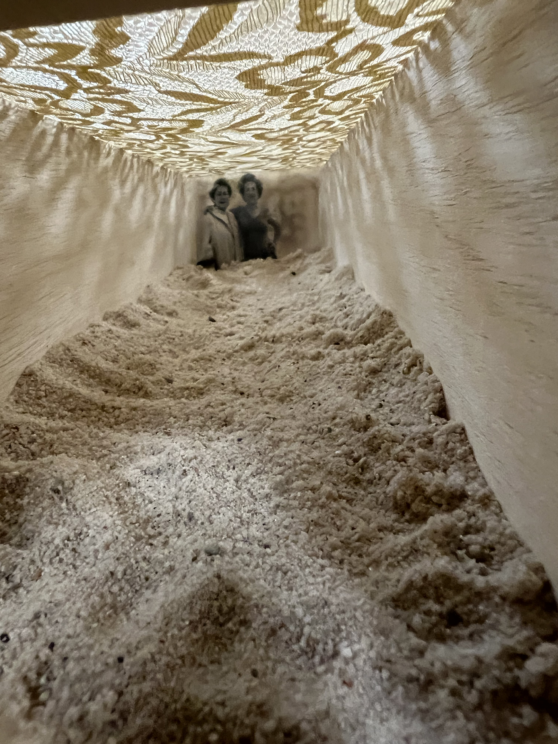
INTERVIEW: RICHARD LOU
JUL. 07, 2025
Rachel Bubis: You collaborate with your family in works such as Embustero: A Robotic Theater, an installation featuring fabricated robots made by your son and audio recordings of your siblings. What was the experience like working with them on this project?
Richard Lou: Back in the late '80s, I staged a protest performance in front of the Chula Vista school district. A few local students had been setting up actual traps along the border, targeting undocumented migrants. The school district didn’t take any meaningful action — they obfuscated, brushed it off.
So I brought my kids with me to the protest. There's a photo of me pushing them in strollers, little target signs pinned to our chests. They’ve been involved in this kind of work since they were infants. These days, of course, they have a lot more agency. They're not just along for the ride anymore — they actively participate, especially with recent projects that center on family stories. That investment, that sense of shared legacy, is critical to me.
It’s not just about drawing on their talents — it’s about honoring their stories. Stories passed down from their grandparents, great-grandparents. When my kids take part, they become stewards of that history. It’s through their involvement that these narratives evolve and stay alive. That’s how stories are kept — through living memory and shared experience.
RB: Are your kids artists in their own right?
RL: No, not in the traditional sense. A couple were musicians at one point. One was interested in art but ended up going into education. She now works with pre-K kids on the spectrum as a behaviorist.
They all took different paths early on. Honestly, after attending endless gallery receptions and eating too many cubes of cheese, I think they were a little burnt out on the art world. It can go either way with your kids — you either inspire them to follow in your footsteps, or they see what you do and think, No thanks, not for me.
RB: You started out writing before moving into other forms of art. Can you talk about that?
RL: Yeah, writing was my first creative outlet. I started in third grade, mostly poetry. I didn’t think of it as “art” — I was just expressing myself. Through middle school and high school, I kept writing. A few poems got published in school publications. At the time, my dream was to become a high school American literature teacher. I wanted to emulate the teachers I loved — share big ideas, help students see themselves in literature, and maybe inspire them to dream big too.
But then college hit. And I thought, I don't want to starve as a creative person. So I switched my major to psychology. I actually loved it. But eventually, I had to come to terms with the fact that creativity was central to who I was. Once I embraced that, I never looked back.
At Cal State Fullerton, I kept taking literature and poetry classes. I had amazing teachers. One in particular — Mr. Schwartz — taught an advanced poetry class and really shaped my writing. But my real mentor was Dr. Sherwood Cummings, a Mark Twain scholar. He wasn’t from the visual arts world — he came from literature, but he was everything you hope for in a mentor: brilliant, kind, encouraging. He looked a bit like Mark Twain too — white hair, mustache, tweed jacket with elbow patches, the whole package.
One day in class, he had us read a poem by Howard Nemerov (Diane Arbus’s brother), called The Vacuum. We were supposed to discuss it. And in this out-of-body moment, I raised my hand and said, “I can write better poetry than this.” Everyone around me gasped. Professors can crush you for less. But Dr. Cummings just said, “Really? Bring some poems next class and read them.” So I did. I waited until the end of the next class, and he actually saved time for me to read a few pieces. When I finished, the room broke out in applause. I felt like the heavens opened. I had found my place. Someone saw me, really saw me. Afterward, he asked, “Do you have more?” I was stunned. Do I have more? Of course I did.
I rode my bike home, practically replaying the whole thing in my mind like a mixtape — the applause, the praise. But then, just before I got home, this wave of shame hit me. I realized how bad those poems actually were and I confessed to him how bad my poems were after our next class meeting. But still — he saw something in me. And that moment set me on the path I’m still on today.
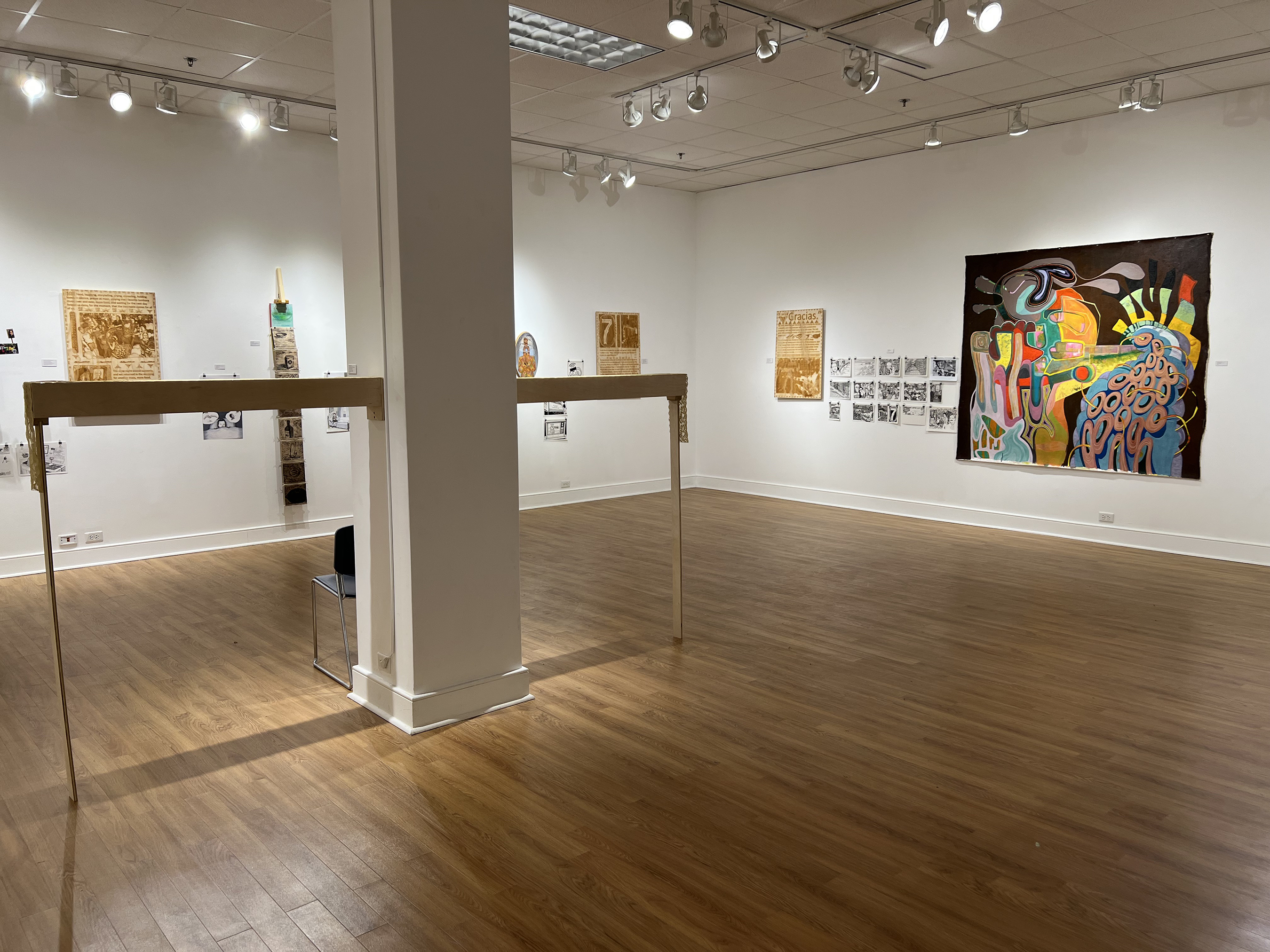
Installation shot, Embustero: The Generation of a Graphic Novel. Wooden laser engraved panels with images by Lisa Williamson and text by Richard A. Lou, drawings and painting by Valerie Aranda, painting and drawings by Danielle Sierra, drawings and paintings by Lisa Williamson.
RB: Why did you use robots as a medium for storytelling in your most recent work?
RL: So there was other work that included text — lots of work that included text. And in actuality, I’m not really a materials-driven person. I write things down first, make diagrams, test ideas in my head — and then I start seeking materials to help those objects manifest themselves.
Before the robots, for example, I created Stories on My Back, an installation where I built these columns with audio recordings inside them that people would walk through. All the recordings were stories read by my children. So I think getting to the robots really stems from me writing all these stories down — because, as you get older, you start thinking about death more. And now that I have grandchildren — two amazing grandkids — I started wondering: how do I extend my life with them?
I’ve been telling some of these stories through installations for years. They were written down, but only as components within installation pieces — not really in a literary sense. So I decided, okay, I’m going to write down all these family stories, Xeroxed them and make sure my grandkids had them, and my kids, and if my siblings wanted them too — just a kind of internal archive. But you know, as a creative person, I started looking at those stories and thought: hey, wait a minute... maybe there’s something more here.
That’s when I started thinking about creating a graphic novel. I enlisted help from my friends Lisa Williamson and Guisela Latorre, an art historian who has written extensively about my work. I started sharing ideas with them, just testing the waters — creatively and intellectually. Eventually, I was like, yeah, I’m going to do this.
Then I reached out to a colleague who was very familiar with my work. He used to be at Ohio State and he and Guisela had brought me out there for a lecture. His name is Frederick Aldama — he’s a world-renowned comic book scholar. I contacted him and said, “Hey, I’m thinking about doing this.” And he said, “I’ll publish them.” I was like, whoa — I’ve never done this before. And he said, “I know your work, so I’ll take it.” So that’s where we are now.
From those graphic novels came this broader impulse — as a way of continuing to, I don’t know… not die, I guess. When I was doing Stories on My Back in the mid-2010s, the show traveled around the country. And I started thinking: what if these columns moved — like bodies? Because they already felt like bodies.
That’s when the idea of having a virtual self emerged. Especially with this one robot — I think I sent you the videos — there are two of them, but one kind of walks around, moves. I kept thinking about walking with my mom and dad, and how they’d tell me stories as we worked the swap meet, moving from one spot to another. Or how my mentor would tell me stories while we walked. That robot became like my avatar, in a way. And that’s how many robots are used now — to sustain stories in electronic form. Or to allow people in a gallery to interact with another body — one that’s moving, talking, stumbling. That was the idea behind it.
The other robot, the one that sweeps across — it reminded me a lot of a typewriter. I remember writing on one in high school. I took a typing class, which ended up being one of the most useful classes I ever took. It helped me so much in college because I could write faster and more fluidly. My father had bought me a little Brother typewriter — a small, blue electric one — and I used it for years and years.
So when I saw that robot project words as it swept across the wall, it gave me that visceral feeling of writing — like being back at the keyboard. The sound, the feel, the ideas germinating between you and the machine. That’s where the concept came from for that robot in particular.
I’ve had the wonderful opportunity of working with my son Ming — well, all of my children are talented, but this one has always been into robotics. He’s both an electrical and computer engineer, with degrees in both, and now works with flight simulators at FedEx. He and I had been talking for years about making machines that move. I don’t have that kind of skill set — I can fabricate things out of wood, sure — but I asked him, “Can you make it do this?” And he said, “Yeah.” He has all these 3D printers, and I just built the wooden structures around the mechanisms. He put it all together and made them do exactly what I envisioned.
RB: It really does have a feeling of a typewriter.
RL: Yeah. So my plan is to make more — more of those sweeping ones. I really love that concept, but I want to build them in different tiers, projecting different things. The idea is that you'd have multiple elements sweeping across simultaneously. And they make that really strange, mechanical sound, right?
Even though they’re just little robots, they’re surprisingly meditative to watch. Both of them are, actually. But they’re so different in how they tell stories. They each have their own presence and way of occupying space — those are the kinds of things I’m always thinking about, especially as someone who works with installation.
Another thing that’s been on my mind — as I get older — is the physical labor involved in some of my past installations. Like when I did The Border Door, I also built a tunnel in the gallery. It was 30 feet long and doubled as a ramp. I made this mechanic’s creeper, and underneath the tunnel I installed three doors. One door was covered in sarape with gold letter text. The next had seven small doors with photographs from the portable performance. And the final door was layered with immigration papers and doorknobs.
Visitors would lie down on the creeper, with a light shining up, and kick their way through the tunnel to the other end. The next person would pull the rope to bring it back — since it was all set up on a pulley system. It took me about a week and a half to build all that.
I can’t do that anymore.
RB: That sounds intense.
RL: Yeah, you know — it was a week and a half, eight to ten hours a day, just building. But I’m still really fascinated by this idea: How do you create a space that feels dynamic? I don’t know if I’m achieving it, but that’s the question I keep returning to — how do you create an immersive environment where people have to check in with their bodies?
Not just come in, glance around, and move on — because, not that artwork on the wall isn’t meaningful — but especially for those of us who’ve spent years looking at art, it’s easy to enter a gallery on autopilot. So how do you interrupt that? How do you break that habit?
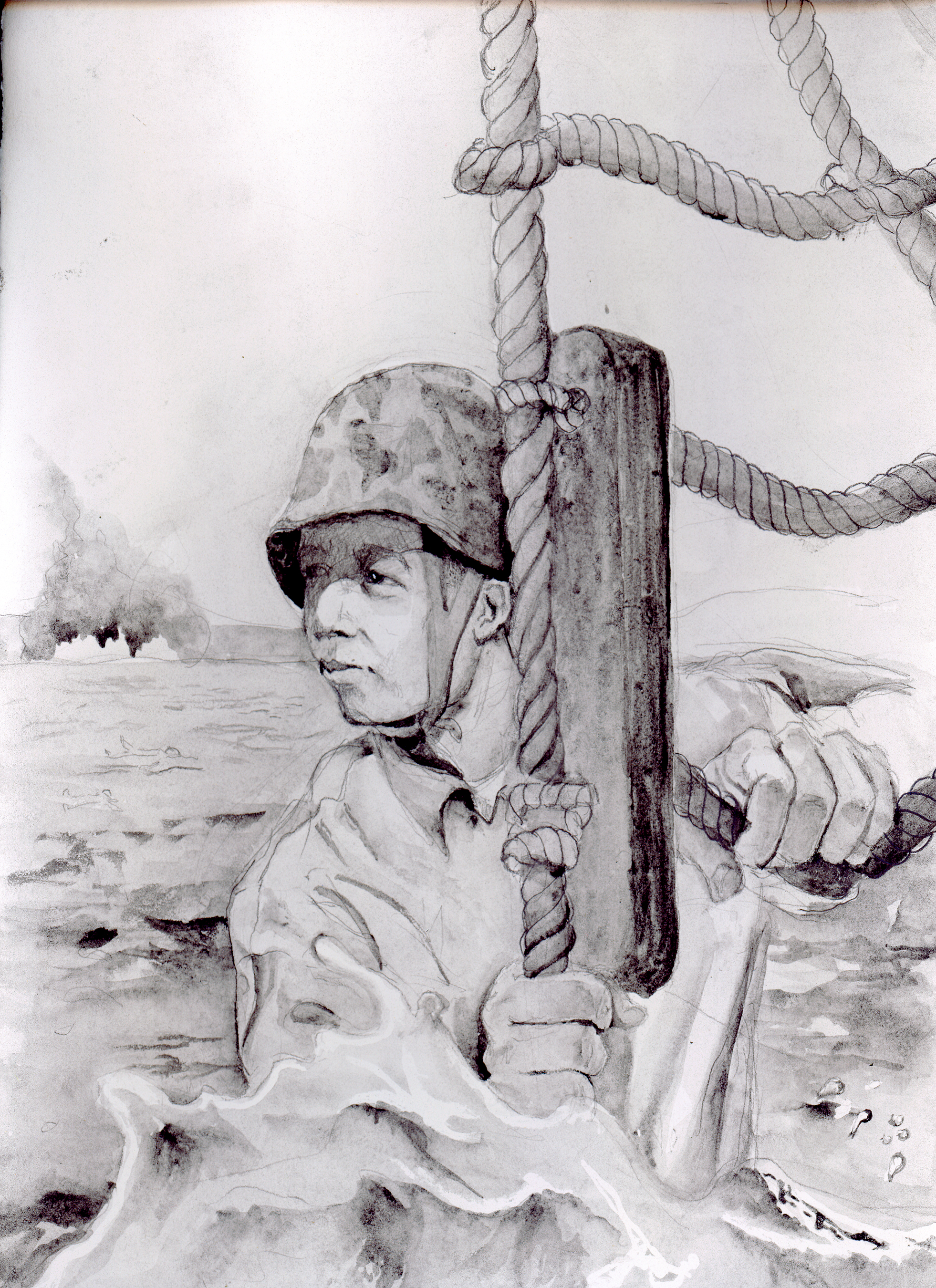
Drawings by Kelly Cook based on a short story titled Pebbles in His Mouth from the upcoming graphic novel titled Embustero by Richard A. Lou.
RB: You mentioned your 1988 work Border Door, a site-specific performance and installation where you placed a free-standing door on the U.S. / Mexico border as a symbolic portal for immigrants to cross with dignity. One could argue that “Border Art” is more relevant now than ever. Has your perspective on this work changed since you first created it? Do you think the public response would be different if you installed the piece today?
RL: If I were to install that piece today, the reaction would probably be much more violent. They’d likely seek me out, punish me publicly — and maybe even target my family. The world we live in now feels increasingly frightening.
The summer before last, I read the John Meacham biography of Abraham Lincoln — my wife Kathy gave it to me. It was wonderful. Lincoln, for all his flaws — and we all have them — was deeply reflective. And I’m not saying I’m Abraham Lincoln, of course, but something he said really stuck with me. He lamented that while opposition is a constant, what disturbed him most was that the pro-slavery advocates weren’t just asking to coexist — they demanded recognition. They wanted others to admit that their way of life, based on enslaving others, was not only valid, but right.
That resonates today. It’s not just about coexistence anymore — it’s about being expected to kneel at someone else’s altar. To affirm not only that their beliefs are acceptable, but that they’re superior. And that’s terrifying.
If I were to create The Border Door today, I might have to do it from exile — from El Salvador, or somewhere else. In that sense, yes, The Border Door remains just as relevant — maybe more so.
I think of Gloria Anzaldúa’s writings, where she talks about borders — not just as geographic or geopolitical boundaries, but as ever-present lines of resistance. For Chicanos, Chicanas, and other marginalized people, borders are everywhere. They emerge wherever we encounter resistance simply for existing.
So the border isn’t just a line on a map. It’s wherever people are forced to fight for dignity — whether it's women defending reproductive rights, the LGBTQIA+ community fighting for the right to exist, or countless others pushing back against systems of control. That’s where the real border lies: in the space between dignity and dominance. And sadly, the need some people have for dominance only seems to be growing.
RB: After moving to the American South from California and Mexico, you maintained an interest in the Chicano experience while also drawing parallels with the South’s history of slavery and right-wing extremism. Can you talk more about these parallels and how they’ve impacted your work? In what ways has your work changed — or stayed the same — because of this shift in environment?
RL: My foundational strategies as a Chicano artist haven’t changed much. I still examine history, not just as a scholar but as a learner deeply embedded in it. I study systems of dominance — how they rise, how they’re sustained, and how they sometimes decline. What’s changed is the geography. And with geography comes a different historical context.
Here in the South, my work has addressed things like Confederate monuments. But the core strategy remains the same: making public, site-specific art that questions power. I try to redirect the narrative — to center the voices of the marginalized and displace the dominant perspective. That’s the aim, even if I understand how small my gesture might be in the grand timeline of systemic oppression.
Take the Nathan Bedford Forrest statue in Memphis. That equestrian statue stood from 1904 until very recently. A monument to a man who symbolized pro-slavery, anti-Black, anti-Brown, anti-Catholic, anti-woman ideologies — it stood for over a century. I did a performance at that site that lasted maybe an hour. That’s all. One hour of interruption after decades of that monument broadcasting its message. My work was a brief moment of resistance in a long and brutal legacy.
Did I get pushback for that performance? Of course. I’ve received pushback for a lot of my work. It comes with the territory when you create art that challenges dominant narratives. People get upset. I’ve been called a “reverse racist” during public lectures. I’ve had people storm out. Some have written letters demanding that I be fired.
But the truth is, I don’t go out seeking controversy. I’m not trying to provoke for the sake of provocation. I’m trying to understand the world through my own lens — and when I speak from that place, it often runs counter to the dominant cultural script.
If I silence myself out of fear of disagreement, I’m complicit in erasing my own experience. And that’s not a world I want to live in. The moment I speak from my perspective, there’s going to be dissonance. That’s just reality. And when I use large-scale gestures — public works, performances, installations — more people have the opportunity to disagree. That’s part of the risk.
When you look at contemporary art practices today, especially outside of traditional galleries, that’s where I see my work living. I think of the world itself as a gallery — a place where public space can be activated and interrogated. I’m interested in how a specific site can communicate with the work I’m doing. How a space charged with history or tension can meet the art in a meaningful way. That kind of engagement feels relevant. It’s not just art in a vacuum — it’s art in dialogue with real people, real places, and real power.
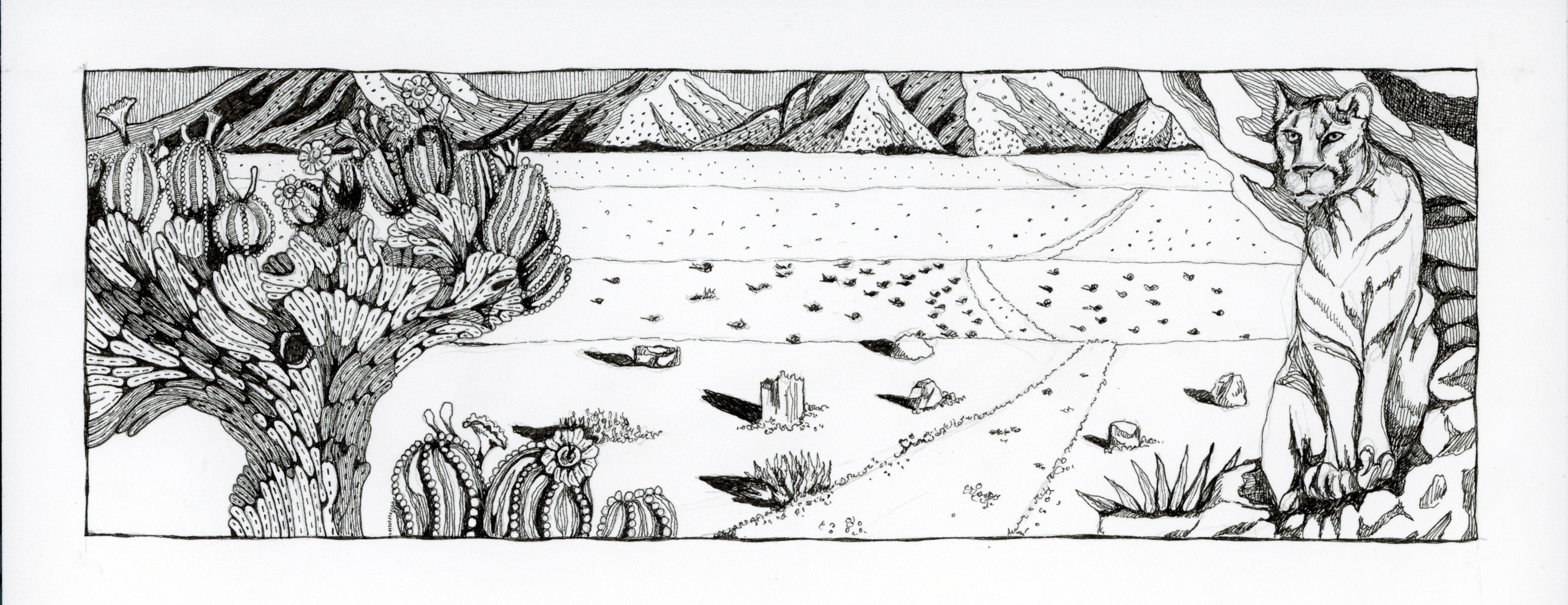
Drawing by Lisa Williamson based on a short story titled La Copeta from the upcoming graphic novel titled Embustero by Richard A. Lou.
RB: Your work has been described in a lot of ways — artivism, social practice, border art. You've been placed into all these categories over time. I'm curious — how do you personally like to categorize your work?
RL: Honestly, I don’t really. I’ve seen the labels shift over the years — new terms come up, old ones fade. And that’s fine. It makes sense. Language evolves. We keep refining how we talk about art, and that’s a good thing. It’s part of what makes the art world and academic scholarship exciting — we’re constantly rethinking and rearticulating what work means and how it functions. So I don’t mind the categories. I just don’t feel the need to define myself by any single one.
RB: You’ve critiqued the traditional art gallery model and advocated for artists to reinvent it in ways that are more accessible. Are there any models you find effective or inspiring? Have your thoughts on this evolved?
RL: I believe artists should be supported as professionals — just like in any other field. There should be galleries everywhere that pay people real living wages — not just artists, but also gallerists, registrars, graphic designers, writers… everyone who contributes to cultural production.
I think we need a system where culture-making isn't tied solely to commodification. I’m not saying there’s no place for that; the commercial art world serves a purpose, and that’s fine. But our creative lives shouldn't be tethered only to the market value of our work. Instead, we should center the intellectual value and cultural worth of what we make.
Of course, aesthetically pleasing work plays a role — it's something I talk about with my students. It’s an important tool, and I use it too. If I want people to engage with my work, I have to think about how to make it visually compelling or seductive. But that alone shouldn’t be the reason certain artists are elevated over others — just because their work sells easily to those with financial means. That dynamic can lead to a handful of people shaping what “art” looks like for everyone else.
There’s an example I always think about. One of my pet peeves. When I moved to Memphis from San Diego, I kept up my habit of listening to public radio. But in Memphis, it is all classical music — 24/7. And I don’t hate classical music — my kids are trained in it — I even find some of it incredibly beautiful. But I don’t want to hear it all the time.
Eventually, I found Mississippi Public Radio, and I thought, “Finally!” Because during some of the most intense political and humanitarian crises — like during COVID — I wanted to hear news and analysis. But instead, all I could get in Memphis was classical music. And you know why? I asked someone who would know, and they said, “Yeah, I listen to Mississippi Public Radio too.” Then they told me: a couple of families in Memphis pay for the classical programming. So just two or three wealthy families get to decide what’s on the public airwaves.
It’s the same thing with some galleries. A small number of individuals end up dictating what counts as art in a community. And that’s just not right.
So for me, the challenge is to develop more publicly supported cultural spaces — like they’ve done more consistently in Europe. For example, in San Diego, there’s the Centro Cultural de la Raza. It’s a nonprofit cultural space with a gallery, dance and theater programming, and a specific mission. It’s free to the public, and it supports artists. It’s had its financial ups and downs, but it’s back on the upswing now.
Another model is Crosstown Arts here in Memphis. Back in the ’80s, we called them “alternative spaces,” and they were everywhere. I was lucky enough to participate in one called Cornerhouse Gallery in Manchester, England.
There are models like these around the U.S., but not enough. Simply not enough. These are the kinds of spaces I think would best serve society — not systems based solely on privatization or commodification.
RB: I’ve grappled with this myself being in the gallery and non-profit world. Trying to think about what models would actually work, what we really need. It’s tough.
RL: Yeah. The nonprofit structure, honestly, it’s not really designed to succeed. It’s not built to be sustainable — and that’s the problem. It’s terrible. What non-profits do is often heroic, no doubt. But financially, especially when it comes to grants and funding...
RB: You’re constantly at the mercy of the grantors.
RL: Exactly. It’s just not sustainable.
RB: Well, thank you. My last question — what are you working on now, and what’s next?
RL: Yeah, I mean, here's the thing — that’s what’s awesome about being 66 years old and doing all sorts of things. I haven’t really listened to people for a long time, actually. I just do whatever I want now.
I’d still like to explore more of the robot work I mentioned, as well as the laser-engraved wooden panels and those wooden memory tubes. I really love those — there’s lace on top, and the way the light filters through them is just beautiful. I want to continue developing that.
I’m also finishing up a graphic novel. The drawings are coming in, and hopefully by mid-to late June, they'll all be done. Thanks to Tri-Star Arts, I was able to hire a graphic designer who’s ready to put it all together. I’ve been fortunate to pay a lot of the folks working on this thanks to the Current Art Fund grant I received.
I’m also working on a children’s book series. A publisher is interested, and people are working on the illustrations now. It’s a four-volume set. I just did the final edits on the first volume and have started working on the second. I’m hoping to finish the second by summer, maybe the third by fall, and ideally have all four completed by this time next year.
On top of that, I’ve got 11 to 16 pages of notes on more family stories I want to write, so I’ll be gearing up for that, too. Right now, I’m not actively looking for exhibitions, but eventually I’ll need to compile everything into a small, cohesive package and start getting it out there.
Another project I’m focused on is archiving. Last year, the Smithsonian interviewed me, and my biography is now in the Archives of American Art. They recently contacted me about my papers — my documents — and this summer I’ll start organizing everything. The plan is for the archivists to come in the fall and look through it all. I’ve never done anything like this before, and honestly, I’m terrible at keeping things. A good friend of mine, Robert Sanchez, is an amazing archivist. I visit him and he’ll pull out a floor plan I drew years ago, and I’m like, “You kept that?”
I’ve always just shoved installation sketches in my back pocket, walked around with them, and then tossed them. But I’m trying to stop doing that. Now I’m realizing, “Oh, this is archivable.” So I’ve been reaching out to collaborators and letting them know that some of our shared work will be going to the Smithsonian. I just got an email from one of the archivists before we started talking today. I’ll be working on getting everything together this summer so when they arrive, it’s not total chaos — just some semblance of order and sanity for them to sift through.
Beyond that, I still have 10 to 15 years' worth of projects I want to work on. I’ve got a running list of artworks and ideas.
And then... I want to build a boat.
Just a small dinghy — like a 12-foot row/sailboat. I’ll start by building a full-scale model out of cardboard, then use that as a template to build the wooden version. My dream is to teach my grandkids how to sail. We’ve got a few lakes around here — Shelby Farms allows non-motorized boats, so it’s perfect. A friend of mine, Leslie Luebbers, who’s the museum director on campus, asked me what I was doing this summer. She said, “Richard, when’s the last time you sailed?” I told her it’s probably been 30 years. She laughed and asked if I was really going to sail, and I said, “That’s why it’s a rower too!” I haven’t been in ages, but I used to love sailing. I watch sailing videos all the time now. It’s been a lifelong dream — I always imagined living on a sailboat since I was about eight or nine. So I’m excited to finally build one myself.
Credits for Embustero Collaboration:
Illustrating Artists:
Valerie Aranda, Kelly Cook, Carlos Sanchez Lizarraga, Pam McDonnell, Jo Carol Mitchell-Rogers, Michelle Reistra de la Rosa, Jennifer Shiberou, Danielle Sierra, Robert Spencer, Lisa Williamson, PhD.
Robot Work, Video, and Audio Contributors:
Robot Design and Fabrication:
Ming A. Y. Lou, Richard A. Lou
Robot Fabrication:
Ming A. Y. Lou
Wall Robot Video (based on Lou’s short story, The Purga Lady and the Devil Cat):
Mark Rawlinson
Mobile Robot Audio (based on Lou’s short story, La Copeta):
Duane Trammell
Voice Over:
Francisco Lou, Mina Paal, Michelle Munoz-Jones, Sean Murphy, Linda Smith
Video Piece – A Love Letter to My Mother (2024):
Written by: Richard A. Lou
Drawings: Pam McDonnell
Video Animation/Editing: Mark Rawlinson
Audio Editing and Voiceover: Gloria Lou Elion
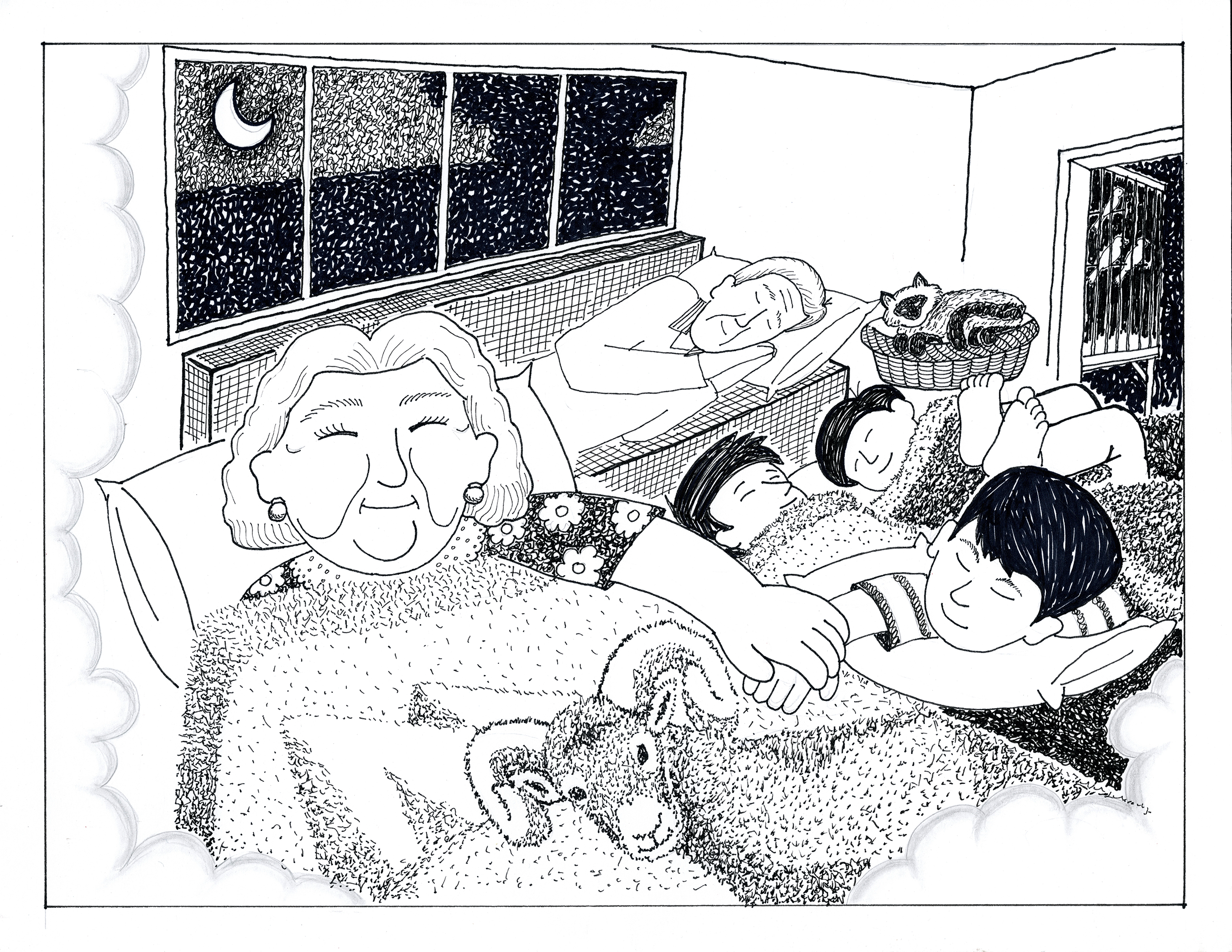
Drawings Carlos Sanchez based on a short story titled Los Abuelos from the upcoming graphic novel titled Embustero by Richard A. Lou.
Richard Alexander Lou was born in San Diego, CA and raised in San Diego, CA and Tijuana, BCN, MX. Richard grew up in a biracial family which was spiritually, and intellectually guided by both an anti-colonialist Chinese father and a culturally affirming Mexicana mother. Educated at Southwestern College, Chula Vista, CA receiving an A.A. in Fine Art in 1981; California State University at Fullerton, CA receiving a B.A. in Fine Art in 1983; Clemson University, Clemson, SC receiving an M.F.A. in Fine Art in 1986.
Rachel Bubis is a Nashville-based independent arts writer, regular contributor to The Focus blog, and LocateArts.org Web Manager for Tri-Star Arts.
* images and video courtesy of the artist
